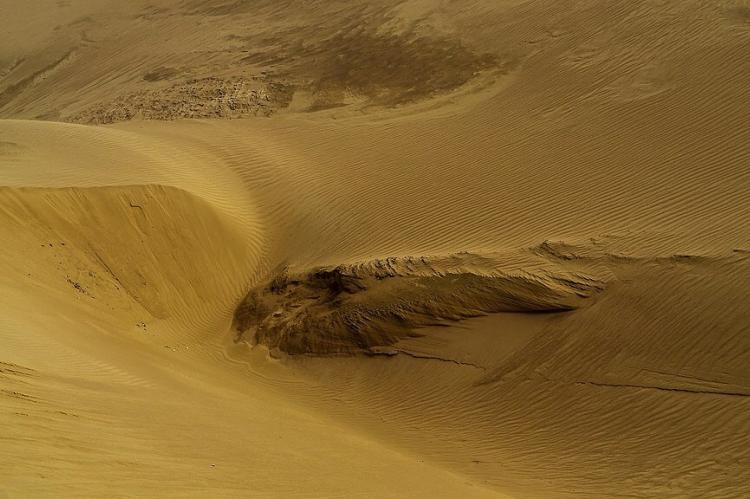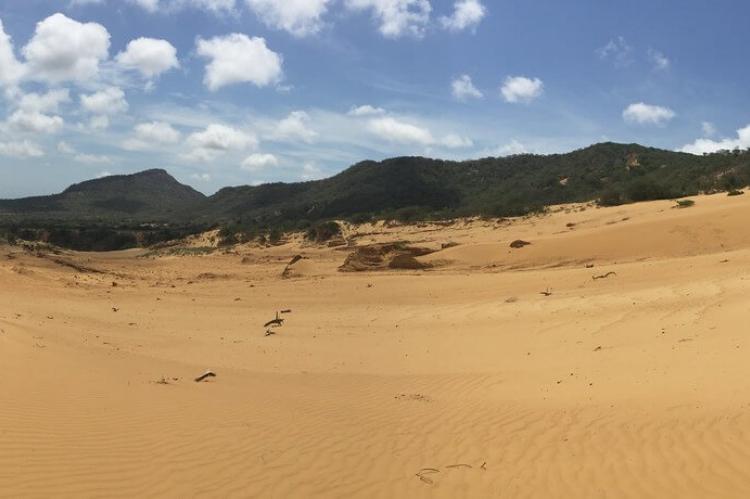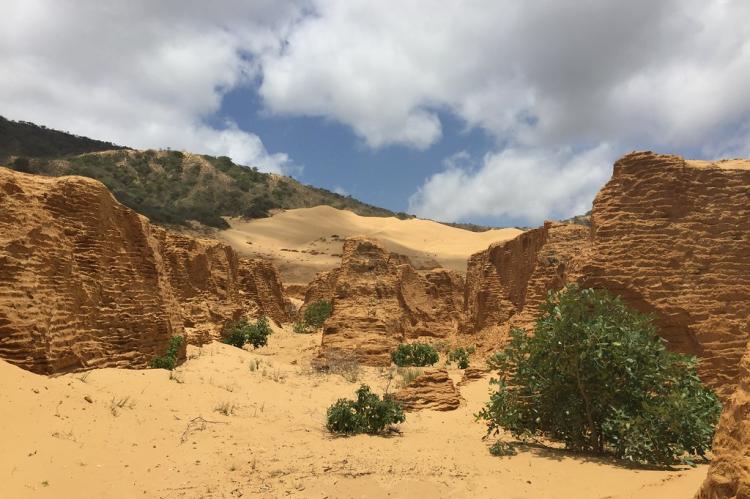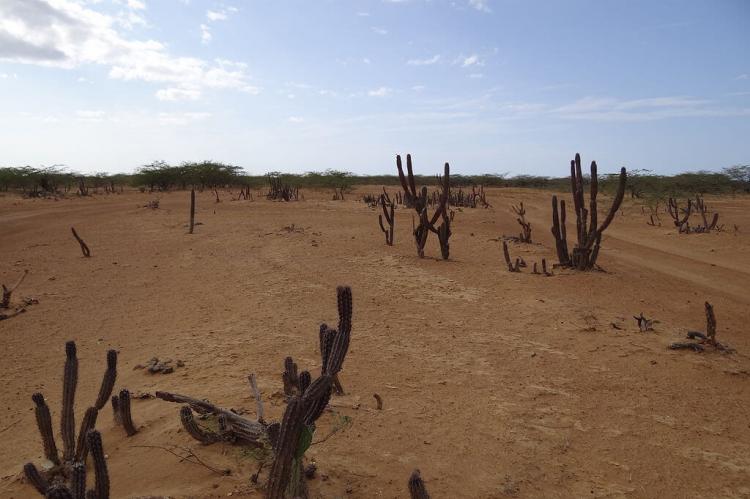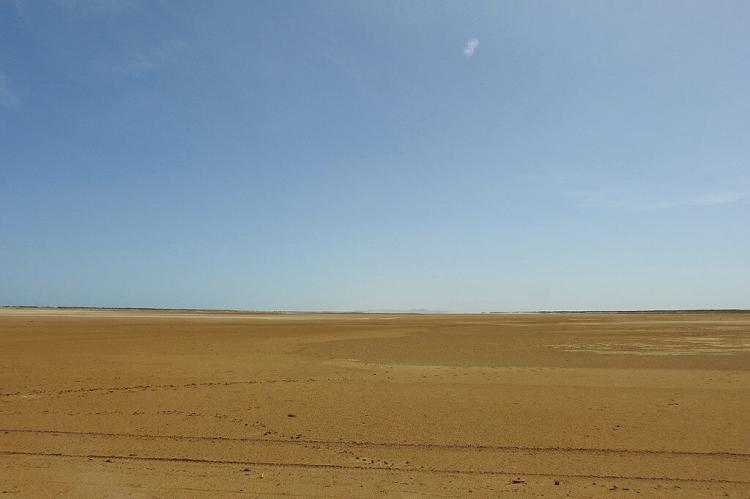La Guajira: Desert, Mountains, and Indigenous Heritage
The La Guajira Peninsula in northern Colombia extends into Venezuela and features the La Guajira Desert, the Serranía de Macuira mountain range, and the Macuira National Natural Park. The region is known for its diverse ecosystems, indigenous cultures, and natural resources.
From Desert to Cloud Forest: The Enigmatic La Guajira Region
The La Guajira Peninsula, located at the northernmost tip of South America, is home to the vast and mesmerizing La Guajira Desert, the lush Serranía de Macuira mountain range, and the protected Macuira National Natural Park. This unique region of northern Colombia, extending slightly into Venezuela, boasts a remarkable diversity of ecosystems, indigenous cultures, and significant natural resources. The juxtaposition of arid desert landscapes with verdant mountain ecosystems creates a captivating area of immense ecological and cultural value. This area is a geographical marvel and a living museum of natural history and human culture.
La Guajira Desert
Geographic Overview
The La Guajira Desert, spanning most of the La Guajira Peninsula, is the largest desert north of the equator in South America. This coastal desert stretches along the Caribbean Sea and is characterized by its xeric scrubland, a habitat adapted to extreme aridity and high temperatures. The desert's landscape is dotted with dunes, rocky outcrops, and sparse vegetation that has adapted to the harsh conditions.
Indigenous Wayú People
The desert is predominantly inhabited by the Wayú people, an indigenous group known for their resilience and deep connection to the land. The Wayú are primarily herders, raising goats and sheep that graze on the sparse vegetation. They are also renowned for their skills as deep-sea divers, collecting pearls from the Caribbean Sea. This practice not only sustains their livelihood but also preserves their cultural heritage. The Wayú people's traditional knowledge of the desert's flora and fauna is invaluable, offering insights into sustainable living in one of the planet's most challenging environments.
Natural Resources
The La Guajira Peninsula is rich in natural resources, particularly coal. The El Cerrejón zone is one of the world's largest open-pit coal mines, significantly contributing to Colombia's economy. However, coal extraction has raised environmental concerns, impacting the desert's fragile ecosystem and the Wayú people's way of life. Efforts are being made to balance economic development with environmental conservation, ensuring that the region's natural beauty and biodiversity are preserved for future generations.
Serranía de Macuira
Geographic and Climatic Features
Nestled in the heart of the La Guajira Desert, the Serranía de Macuira mountain range rises to a maximum elevation of 864 meters (2,835 feet). This range, spanning approximately 35 kilometers (22 miles) in length and 10 kilometers (6.2 miles) in width, comprises three interconnected massifs. Its isolation from the Sierra Nevada de Santa Marta and the Eastern Ranges of the Colombian Andes makes it a unique "biogeographic island." The terrain is rugged, with steep slopes, deep canyons, and valleys that create a dramatic landscape.
Ecosystems and Biodiversity
The Serranía de Macuira's unique location, surrounded by the arid desert, creates a microclimate with relatively high humidity. This results in ecosystems of dwarf trees, cloud forests, and unique flora adapted to the area's specific conditions. The northeastern slopes, which receive the most humidity from the trade winds, are lush with springs and brooks, supporting a rich variety of plant and animal life. In contrast, the southwestern slopes are drier, with sparse vegetation and limited water sources.
The biodiversity of the Serranía de Macuira is extraordinary. Over 140 bird species, including 17 endemics and more than ten migratory species, have been recorded. Notable birds include the red-spectacled amazon (Amazona pretrei), the Chaco eagle (Buteogallus coronatus), and various species of hawks and woodpeckers. The mammalian fauna is equally diverse, with species like white-headed capuchin, giant anteater, oncilla, crab-eating fox, and the endangered maned wolf (Chrysocyon brachyurus). The area is also home to numerous reptiles, amphibians, and insects, with around 15 species of snakes recorded and recently discovered frog species.
Macuira National Natural Park
Conservation Goals
Macuira National Natural Park, established to protect the unique ecosystems of the Serranía de Macuira, covers the area of these lush mountains within the arid desert. The park's primary goals include:
- Preserving Ecosystems: Protecting the diverse mosaic of ecosystems and species on this biogeographic island.
- Cultural Conservation: Safeguarding the territorial and cultural rights of the Wayú clans, ensuring their traditional practices and lifestyles are maintained.
- Water Resource Protection: Protecting aquifer recharge zones and water sources crucial for the Wayú population's survival, providing water for drinking, agriculture, and livestock.
Ecological Significance
Macuira National Natural Park serves as a sanctuary for the flora and fauna of the Serranía de Macuira. The presence of permanent and intermittent water sources during different seasons supports a wide range of life forms, making the park a critical area for biodiversity conservation. The park's unique ecosystems, from cloud forests to arid scrubland, are vital for maintaining the region's ecological balance.
Conclusion
The La Guajira Desert, Serranía de Macuira, and Macuira National Natural Park collectively represent a region of extraordinary ecological and cultural importance. From the desert's arid expanses to the mountain range's verdant peaks, this area showcases the incredible diversity of South America's landscapes and the enduring traditions of the Wayú people. Efforts to protect and preserve this unique environment are vital to maintaining its natural beauty and cultural heritage for future generations. The region's combination of biodiversity, geological uniqueness, and cultural richness makes it a treasure trove for scientists, conservationists, and travelers.

